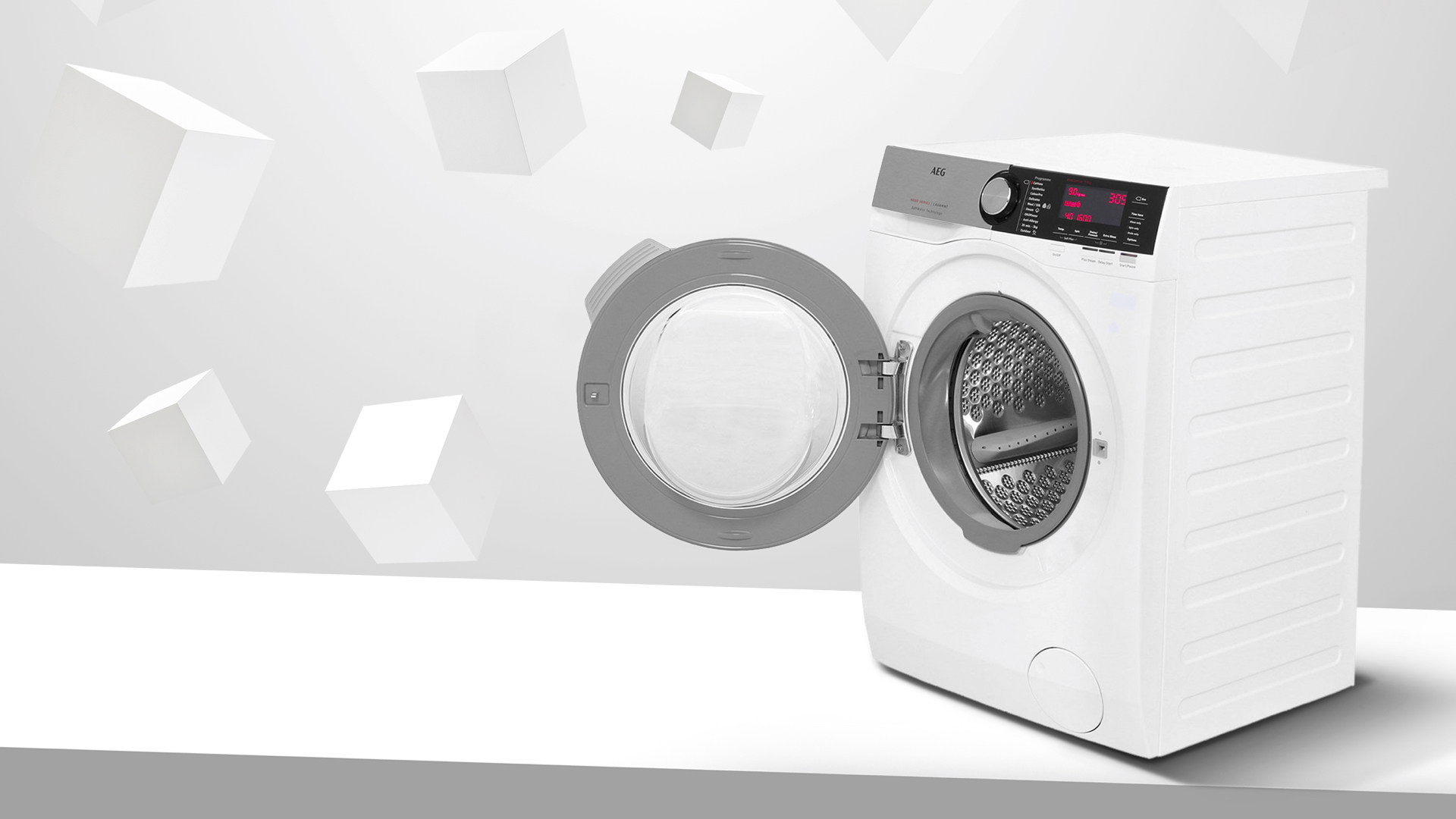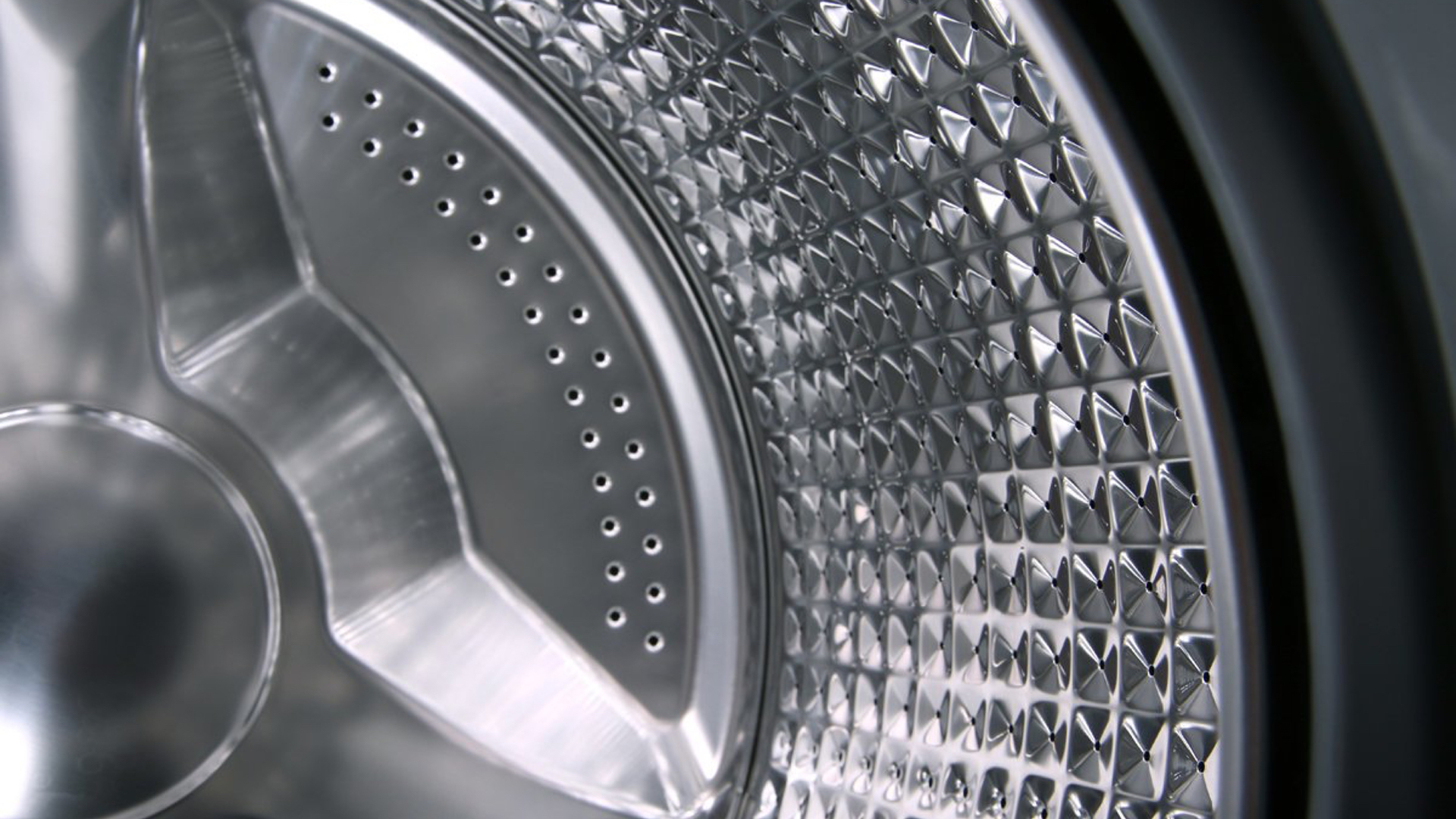How to clean a washing machine: tips and tricks for fresh smelling clothes
Everything you need to know to keep your washing machine in tip top condition


Though the basics of the best washing machines and tumble dryers hasn't changed much over the years, the engineering has. Not only do you get a choice of a million programmes, but they're built in with ways to help make sure they work at their best for longer.
However, they're still machines, and machines occasionally require a little TLC – like a good thorough clean to keep them in perfect working order. One of the most neglected machines in our homes is the humble washing machine. Day in day out, this stalwart of family life churns a large drum filled with piping hot water, soapy detergent and a ton of clothing, and then goes into a spin cycle so aggressively fast it needs slabs of concrete or cast iron to weigh it down to stop it from leaping out of the utility room like a bucking bronco. However, when it breaks down, we scream and shout and worry about how much it’s going to cost to fix.
Given that a washing machine involves the use of at least two prime machine killers – water and heat – it stands to reason that a regularly cleaned washing machine will provide much more reliable service in the long term and save you pounds in unnecessary service charges or worse, a large outlay of funds for a replacement.
However, the most pressing concern for most washing machine users is the musty smell that occasionally wafts out of the drum whenever the portal door is opened – this and the sight of black mould in and around the rubber door seal. Worse still, that same dank smell usually ends up in your washed clothing which gives off a right old odour every time you put something on.
You can avoid a lot of this malarky by periodically giving your washing machine a good deep clean that you’ll be pleased to learn involves zero input by you, because today’s washing machines clean themselves. All you have to do is follow the tips from the experts.
Why do washing machines need cleaning?
Imagine your washing machine has been running for months, cleaning large loads of laundry once or twice a week. If you've been using powdered detergent especially, chances are that not all of it will have fully dissolved and, over time, particles will have gathered in different parts of the washing machine but mostly in and around the rubber door seal. In fact, if you rub your finger along the inside of the anti-drip overflow gap in the door seal of your machine right this minute, chances are it’ll come out slimy. If that area’s grimy, what do the other invisible parts of the machine look like? Worse still, if that slime is left unhindered, mould will start to develop, and with mould comes stench.
According to AEG, the reason mould and musty smells occur is because "the repeated and prolonged use of low temperature programmes can cause detergent deposits, fluff residues and bacterial growth inside the drum and the tub".
Get all the latest news, reviews, deals and buying guides on gorgeous tech, home and active products from the T3 experts
However, it’s not just the washing machine’s door seal and innards that can suffer from neglect. If ignored for long periods of time, small fragments of clothing, loose threads and items left in pockets like coins can eventually clog up the filter system too, causing blockages to the water flow and possibly even causing a flood.
Then there’s that other big machine killer – limescale. If you live in a hard water area, your washing machine will be swallowing and churning gallons of the stuff week in week out and, if left unattended, all that water will eventually cause a buildup of limescale which can cause damage to the heating element, connections and piping. Just look inside your kettle for proof.
So how do you prevent all these foibles from befalling your washing machine? Easy, just read on to find out about the best methods for removing built-up gunk and obstreperous limescale.
These are the best ways to clean your washing machine

The key ingredient is piping hot water
Every modern washing machine has a cottons program and the vast majority will also allow you to select an alternative, higher temperature. The key ingredient for cleaning any washing machine is to select the highest water temperature available. This is usually 90˚C and chances are you’ve never used this setting to clean your clothes because not many items can stand that kind of heat – after all, it's just 10˚ below boiling point. Some machines will even have a dedicated cleaning cycle that sets all the correct parameters automatically. All manufacturers recommend running a 90˚ program at least once a month to keep mould and smells at bay.
Hot water has amazing cleaning properties as evidenced every time we do some manual washing up. Where cold or even warm water makes practically zero impression on a dirty plate, piping hot water magically loosens fatty gunk with ease and often without the need for any washing up detergent.
Some manufacturers will suggest running the hottest water program with no clothing in the drum and no detergent either. This method alone will ensure that most of the gunk is removed and flushed out of the machine.
However, I’ve just referred to the manual for my excellent AEG 9000 Series L9FEC966R, which is still number one T3’s Best Washing Machine guide, and it clearly states the following: "run a cotton programme with the highest temperature (90˚C) with a small quantity of powder detergent." I can remember the same advice with my earlier Miele machine.
In fact, to prevent mould from occurring, Miele advises its army of contented users to "wash at 60˚C or higher once a week and to regularly wipe around the door seal to remove excess water". The company also suggests leaving the washing machine’s door ajar when not in use, something this writer always does.
So, even if you don’t get past this section, rest assured that the above anti-mould cleaning advice will suffice in most instances.
Vinegar – nature’s cleaning marvel?
So many people recommend the use of vinegar to clean a washing machine that you may think it’s the ultimate solution. However, according to a quote in Consumer Reports, “there is a common perception that vinegar can clean everything, but it isn't the catch-all ingredient that you might think it is”.
When it comes to using vinegar in a washing machine they have this to say: "Vinegar is sometimes used as a fabric softener or for getting rid of stains and odours in laundry. But as with dishwashers, it can damage the rubber seals and hoses in some washing machines to the point of causing leaks. With continual use, vinegar can literally melt hoses, causing leaks and thereby possibly all kinds of additional damage to the house”.
Many experts will also suggest a solution of vinegar mixed with baking soda. According to popular UK laundry service Laundrapp, a mixture of vinegar and baking soda "works to break down any grime and residue, as well as neutralising any musty odours in your machine". However, you will likely have to run a second washing program – at a lower temperature – to remove any remnants of vinegar or your clothes may smell like a chippy.

How about bleach?
Bleach is often recommended as an excellent way to kill the bacteria that leads to mould and musty smells. Most experts will recommend pouring about 60ml of bleach into the detergent dispenser draw and running the hottest cycle the machine is capable of. Again you will need to run another empty cycle to remove all traces of bleach in case a) your clothes smell of bleach and b) your prized black cashmere comes out grey.
Proprietary solutions

Most sensible users will simply look in the manufacturers handbook to see how best to clean their machine. After all, if anyone is going know how to clean a washing machine, it’s the actual manufacturer. They designed, built and installed every part of the machine and know exactly how it all fits together. And if there’s one manufacturer I personally would listen to more than anyone else on the internet, it’s Miele.
Well, this writer has came across a Miele cleaning solution called IntenseClean and, according to a video on YouTube, it’s a one-stop-solution for the effective cleaning of all washing machines and dishwashers. Designed be used between once and three times per year, it aims to give a major, major clearout to your machine.
Of course, arguably the most famous way to keep your washing machine in tip-top condition is to use Calgon because, well, ‘washing machines live longer with Calgon’. This long-term solution has been around for years and users swear by it because it allegedly "prevents odours, protects from limescale and prevents dirt residue" while you use the machine.
You have to use one Calgon tablet for every wash, so buying a pack can seem like a large outlay when you’ve already got a sizeable shopping bill in your trolley. But if you think about it, in the long term a product like Calgon may eventually save you a whole world of pain and a massive repair bill. I guess that not for nothing is Calgon recommended by the likes of Bosch, Siemens, Indesit, Whirlpool and Hotpoint.
Remember to clean the detergent trays
It’s pretty obvious really, but don’t forget to clean out the detergent and softener trays in the top draw of the machine. They simply unclip so you can give them a thorough clean under a hot tap. While you’re at it, don’t forget to wipe down the area around the trays. This helps to stop an amount of gunk washing into the rest of the machine – there's no point cleaning the drum thoroughly if the drawer keeps letting nasties back in.
Don’t forget to clean the filter
We all forget about that little square hatch at the bottom of the machine but it’s a vital piece of the jigsaw because it contains the filter. Chances are the filter will be full of threads and, nearly always, at least one manky-looking coin. However, you can’t just open the hatch and untwist the locking mechanism without first having a towel and a low-lipped container to hand. This is because the moment you twist open the filter housing, a small amount of water will start gushing out and if you’re not prepared for it, the floor will likely get soaked.
The best thing to do is to first bunch as much towelling around and under the filter port as possible and then pull out the short one-inch funnel tray under the filter housing. Now carefully undo the large thumb screw. Let the water escape, pull out the filter and remove any objects before giving the filter a good rinse under a tap. Replace the filter, tighten the thumb screw and close the lid.

How to descale your washing machine
I’ve already mentioned Calgon above as an effective way to keep limescale at bay but what if your machine needs a serious descaling session? If Dr Beckmann Service-It Power Descaler is half as good as the company’s Pet Stain & Odour Remover, it should effectively remove all traces of limescale. Simply pour into the drum and set the machine off on a 60˚C cycle. Alternatively, go posh and order a 250g tub of Miele Descaler which uses natural citric acid to gently cure the machine of limescale.
Now you know all about the best methods and products to keep your washing machine a happy bunny, go forth and wash, wash, wash with the Best Washing Machines
Derek (aka Delbert, Delvis, Delphinium, Delboy etc) specialises in home and outdoor wares, from coffee machines, white appliances and vacs to drones, garden gear and BBQs. He has been writing for more years than anyone can remember, starting at the legendary Time Out magazine – the original, London version – on a typewriter! He now writes for T3 between playing drums with his bandmates in Red Box (redboxmusic).
